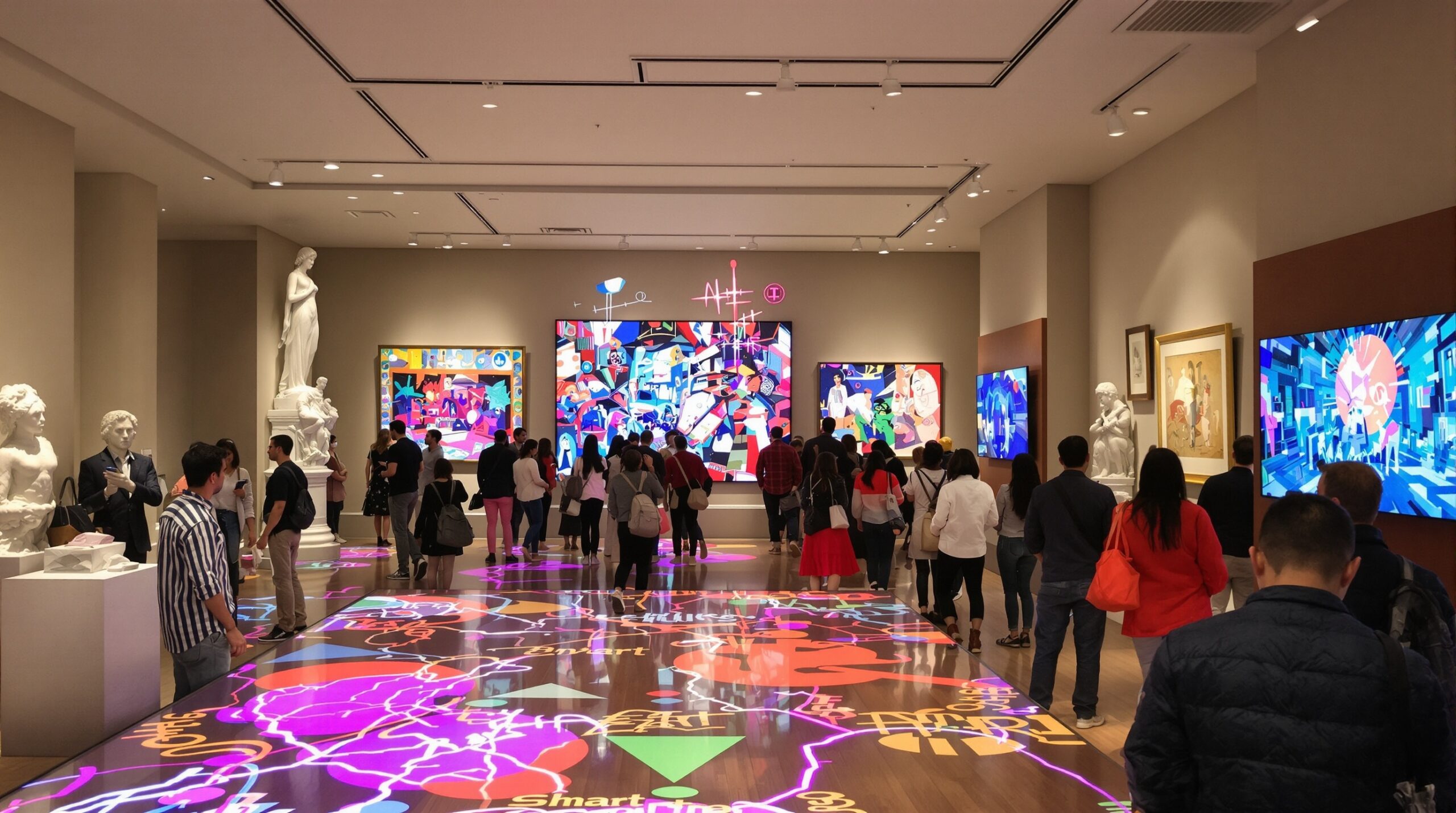The art world constantly adapts and evolves, and artificial intelligence (AI) stands at the forefront of its latest evolution. Traditional galleries have become dynamic environments where viewers no longer observe passively but participate actively. AI-driven technologies unlock new forms of creativity and engagement, reshaping how art is displayed, experienced, and understood.
Redefining the Gallery Experience
Galleries formerly relied on static exhibits and traditional curation. Visitors would view paintings or sculptures from a respectful distance, often without much interaction. AI now enables exhibits to interact with viewers in real-time, merging art with cutting-edge technology. This shift transforms spectators into participants, deepening personal connections with the artworks.
How AI Facilitates Interactivity
AI-powered displays analyze data from sensors or cameras to tailor content for each visitor. Some installations use facial recognition to adapt visual elements, colors, or sounds, depending upon the audience’s reactions. Others allow visitors to manipulate digital art using gestures or voice commands, making each experience distinct. These interactive systems offer feedback and guidance, enhancing accessibility for all ages and backgrounds.
Augmenting Artistic Expression
Artificial intelligence serves both as a creative tool and an independent creator. Artists increasingly collaborate with AI algorithms to push the boundaries of visual aesthetics. Such collaborations generate new art forms that blur distinctions between human and machine creativity.
Generative Art and Machine Learning
Generative art harnesses AI’s ability to process vast sets of visual data and recognize patterns. Artists feed their influences, preferences, and themes into machine learning algorithms, which then create original pieces. Sometimes, these systems run autonomously to produce an evolving series of artworks, ensuring each visit uncovers something previously unseen.
Galleries display these works on interactive screens, letting visitors manipulate parameters such as color palettes or shapes. This active engagement transforms art appreciation into an experimental, co-creative process. The line between creator and viewer becomes delightfully blurred.
Immersive Installations and Enhanced Accessibility
AI-driven exhibits often combine sound, movement, and visual elements to create deeply immersive experiences. For example, a projection can respond to the number of visitors or their movements within the room. These responsive environments invite viewers to step inside the work of art, not just admire it from afar.
Broadening Audience Engagement
Interactive displays make art more accessible to a diverse audience, including those with disabilities. Tactile interfaces, audio guides, and easily adjustable settings ensure everyone can participate meaningfully. AI-driven translations and descriptive narrations bridge linguistic barriers, allowing global visitors to interpret artworks together.
Personalized Visitor Experiences
AI can customize visitor journeys based on individual interests or feedback. Upon arrival, visitors might answer a few questions regarding their preferences. The system then suggests a route or provides additional information tailored to those interests. This curated approach creates a unique visit for every person, boosting connection with both the artwork and the institution.
Some galleries even use AI to adjust lighting, sound, or temperature according to crowd levels. This real-time adaptability keeps environments comfortable and optimizes viewing conditions throughout the day.
Advantages for Artists and Curators
AI’s capacity to sort and analyze large datasets aids curators in discovering patterns or audience preferences within collections. This insight helps shape future exhibitions and marketing strategies. Artworks can be displayed in creative combinations that reflect evolving audience tastes, attracting new demographics to the gallery scene.
Expanding Creative Horizons
Artists gain new tools to express their visions. AI supports complex simulations, unique compositions, and visual effects that would be challenging or impossible by hand. These resources empower both emerging and established artists to reach new audiences and create innovative works.
Challenges and Considerations
Integrating AI into galleries is not without challenges. Issues of copyright, authorship, and authenticity can arise with AI-generated works. Ensuring that all interactive systems are secure and respectful of visitor privacy is essential.
Another consideration involves preserving the emotional impact of traditional art. Some critics worry technology might overshadow the depth and intention behind classic pieces. Responsible curation must balance innovation with reverence for artistic traditions.
The Future of AI in Art Galleries
Galleries continue to experiment with AI-driven features as new possibilities emerge. Augmented reality (AR) and virtual reality (VR) will likely combine with AI to offer deeply immersive and individualized experiences. As these advancements accumulate, the boundaries between physical and digital art will blur further.
Collaborations between artists, programmers, and curators promise to redefine what art galleries can be. The gallery of tomorrow will serve as both a place of wonder and a center for technological mastery. Audiences worldwide can anticipate continuously evolving, interactive encounters with art.
Conclusion: A New Era for Art Appreciation
The integration of AI with traditional galleries marks a significant cultural milestone. This transformation empowers artists, engages visitors, and expands access to global audiences. Interactive displays invite all to enter the creative process, strengthening the connection between humanity and art.
As technology progresses, galleries will continue their evolution. By embracing AI-driven innovation, the art world promises dynamic, inclusive experiences now and into the future.

